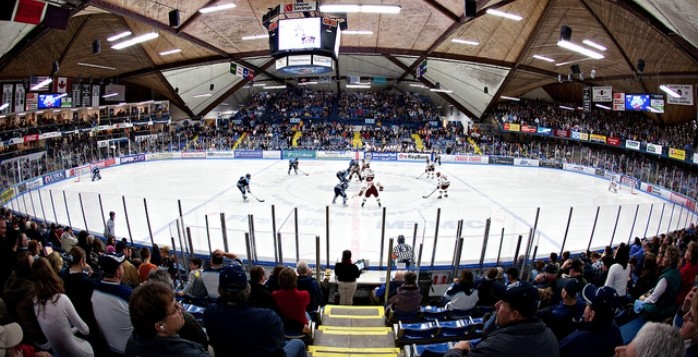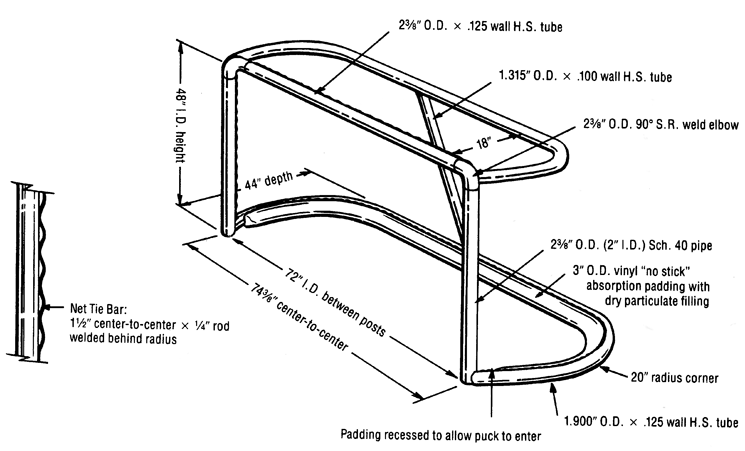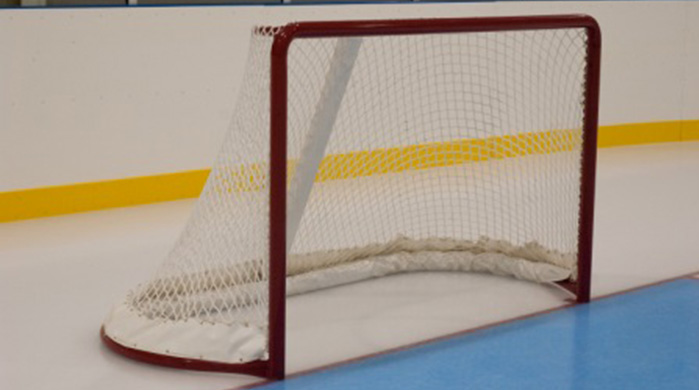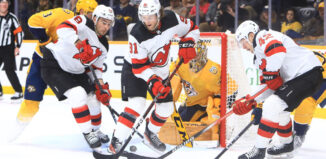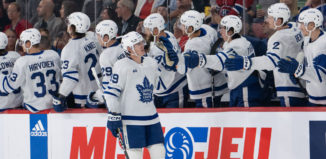Learning the game, just like you: The Net & Monarch’s Jordan Weal
By Ariel Carron
Welcome back, Pink Puck-ers! It is my most sincere pleasure to bring you this week’s topic and our distinguished guest–The Net and all things net along with Manchester Monarch’s Jordan Weal backing us up with some hockey terms. To start us off here’s a picture of an NHL official regulated goal diagram, you can find more information on the nets and goal posts here.
Learning the game so far has brought you, the team positions, the rink, the puck, and now the net. So, using the awesome A to Z Guide to Hockey Terms by Tim Moshansky yet again, we’ll start with the our first term:
The Net-Otherwise known as the mesh, the twine, or the goal.
Bulge the Twine– This is when a player scores a goal that hits the back of the net and essentially pushes on the net to “bulge” out.
Cage-The cage is what it sounds like, it’s the metal frame that has the net attached to it. It can also be referred to as the goal cage, the pipes, or iron.
Cut Down the Angle– When this happens, a goalie comes out of their crease toward a player with the puck, this causes the player to see less of the net behind the goalie.
Drive-There are two different definitions for this, one of them being when a player lets a hard shot go on the net and the second being when a player skates hard at the net.
Empty Net Goal– As it sounds, an empty net goal is when a goaltender is removed from the ice so the team can have an extra player. Something Moshanky notes is that this counts as a goal, but does not reflect on a goalie’s average. It’s also called an “open net”.
Five-hole– Essentially, this refers to the five areas a goal can be scored specifically between the goalie’s legs, the top two corners of the net, and the bottom two corners of the net.
Goal– When the goal-line is crossed and the puck enters the net.
Goal Post-These are the two four-foot red posts on the front of the net.
Going Upstairs-Another term with two meanings, this refers to when a player shoots into the top part of the net, it can also be called “roofing”, “top shelf”, “water bottle”, “top shelf”, or even “Where Grandma Keeps the Cookies”. The other reason is when a goal judge needs to review a goal with video help and “goes upstairs” to do so.
Netting– This is the material that prevents the puck from flying into the stands and hurting someone.
Net-cam– The net-cam is a camera which is attached to the net. According to Moshansky, the first one was used in the 1994 Olympics and shortly after, the NHL began using them.
Paddle Down– I hadn’t heard of this one before, but it is when a goalie is on his knees with his stick flat on the ice to prevent shots from entering the net.
Postage Stamp– This is when a player scores on the extremely small area on the top right corner of the net.
Ripple the Mesh– When the puck hits the net and fans can see it ripple outwards is referred to as “rippling the mesh”.
Scrum– A term borrowed from rugby, this is when a group of players are surrounding the net or the puck.
Short Side– This is the side of the net closest to a player as he approaches the net to shoot.
Shot on Net– It’s pretty obvious what this one is! When a player shoots the puck at the other team’s net.
Sniper– A sniper is a player who can choose any net corner and most of the time, score.
Stoner– This is a goalie who is very good at preventing pucks from entering the net and therefore scoring.
Tuck it in– When a player shoots the puck into a small corner of the net it is called “tucking it in”.
Wraparound– This happens when a player has the puck, skates behind the net to try and get the puck into the net before the goalie can be there to save it.
Yawning Cage– A net that is mostly or completely empty.
And drum roll, please! Now for the Manchester Monarch’s Jordan Weal and his definitions of interference, a one timer, a wrist shot, and a tip in. Will you be surprised what his favorite shot is? You will find out in the video below.
Thank you, Jordan Weal and the Manchester Monarch’s for your help with our Learning the game segment! And thank you to our wonderful Pink Puck fans, without you, we’d be a bunch of girls lost in cyber-space loving hockey (Oh, wait…haha). Anyway, get pumped for next week because we have Monarch’s Andrew Andreoff and in his honor we’ll have a special term topic!
Note: Hey guys, since I’m just learning, if you think I’ve missed something give me a shout out! Or, if you want to know more term information and think I should write an article about it–let me know. I’ve provided a way to get in contact with me above and would love to hear from you. Thanks so much for your support.
References:
Moshansky, T. (2010). A to z guide to hockey terms (2nd ed.). Vancouver, BC: First Wave Publishing.

